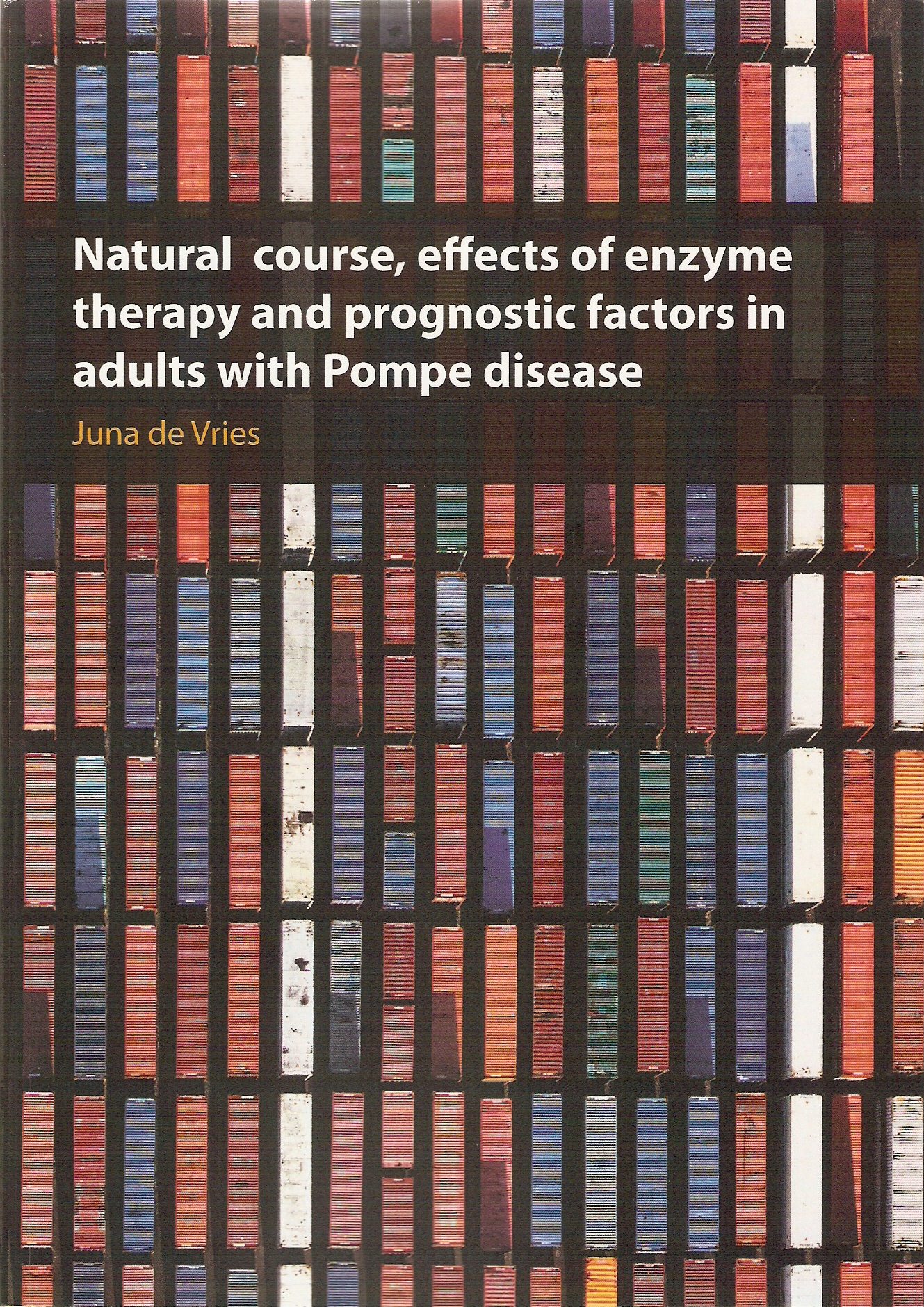 On June 10, 2014 Dr. Juna de Vries received her PhD on ‘Natural course, effects of enzyme therapy and prognostic factors in adults with Pompe disease‘ at the Erasmus University Rotterdam.
On June 10, 2014 Dr. Juna de Vries received her PhD on ‘Natural course, effects of enzyme therapy and prognostic factors in adults with Pompe disease‘ at the Erasmus University Rotterdam.
Enzyme replacement therapy (ERT) using alglucosidase alfa (Myozyme) is the first disease specific treatment fo an inherited neuromuscular disorder, which makes the situation for Pompe disease rather unique. Registration of ERT in 2006 was predominantly based on the positive results obtained from clinical trials performed in infants with classical infantile Pompe disease. Information on the effects and safety of the use of alglucosidase alfa in children and adults with Pompe disease was limited at start of the research of this thesis. For that reason, the Dutch nationwide prospective observational study on the natural course and the effects of ERT in children with Pompe disease started in 2004 at Erasmus MC. In addition, patient-reported information on handicap, quality of life and fatigue was gathered via the international IPA/Erasmus MC Pompe Survey where Pompe patients all over the world participated in.
